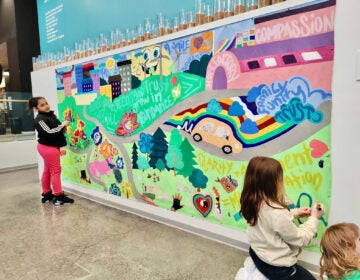A Tour of Abolitionism in Philadelphia
A Tour of Abolitionism in Philadelphia
Producer: Karen Smyles
The City of Philadelphia played an important role in the effort to abolish slavery. The Society for the Relief of Free Negroes Unlawfully Held in Bondage was the first American abolition society and was founded by the Quakers here on April 14, 1775. In 1784 it was reorganized as the Pennsylvania Society for Promoting the Abolition of Slavery and for the Relief of Free Negroes Unlawfully Held in Bondage (better known as the Pennsylvania Abolition Society).
In June of this year WHYY offered members a tour of several African American historical sites here in Philadelphia. The sold out event began at the historical marker just outside our building, that marks the location of Pennsylvania Hall.
Built in the late 19th century, Pennsylvania Hall was the meeting place for abolitionists, but was built at a time when there was a growing anti-abolition sentiment. For 3 days it lived up to expectations drawing people of various backgrounds and races. However, the night of May 17th, 1838 anti-black rioters burned the building to the ground. When the volunteer fire departments were called, they were strictly ordered not to fight the fire. The buildings ruins were left on exhibit for a couple of years to remind abolitionists that not everyone welcomed them.
The tour was lead by archaeologist, Doug Mooney, and Justina Barrett, site manager for Fairmount Park’s historic houses. After the Pennsylvania Hall stop, it travelled on to Belmont Mansion and Strawberry Mansion, where Friday Arts spoke with Connie Ragsdale, board president. Ragsdale gave us the history and a tour of the home. Strawberry Mansion was built by Judge William Lewis, author of the Gradual Abolition Act.
Our last stop was 6th & Market where the Presidents House once stood, now home of the Liberty Bell Pavillion. The home was once occupied by Presidents Washington and Adams.
Mooney shared with tour members the history of the slaves who lived there with Washington and the story behind the decision to leave an excavated portion of the site on exhibit.
WHYY is your source for fact-based, in-depth journalism and information. As a nonprofit organization, we rely on financial support from readers like you. Please give today.




